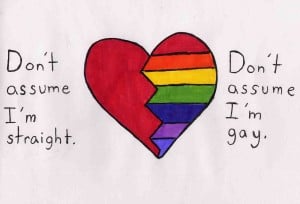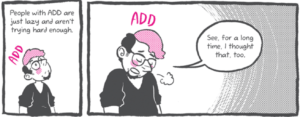Good afternoon. Are we having a transformative afternoon so far? Let’s hear it. Well, I am here today to talk about a lie, in specific, a sexy lie. I know there are lots of lies. Some of them are sexy, some of them are very unsexy.
I’d like to talk about specifically about the lie or the idea that being a sex object is empowering. I’d like to convince you that it is not empowering, first, by talking about what’s sexual objectification is, and then moving on to theoretical and data driven analysis of why it’s damaging. Lastly, provide you a plan of action, so that you can both navigate objectification culture, and change objectification culture. Let’s jump right in.
What is sexual objectification? It’s the process of representing or treating a person like a sex object, one that serves another sexual pleasure. What’s so interesting about sexual objectification is we used to have a vocabulary for it.
In the 60’s and 70’s, we were concerned about sexual objectification and its harm on girls and women. In the 80’s, 90’s, and today, we’ve actually been relatively quiet when it comes to public discourse. Even though our sexual objectification culture is more amplified, we see more images, and 96% of them are female of sexually objectified bodies. We don’t have a vocabulary to talk about it. In fact, young people I think have even mostly lost the ability to identify it.
As a friend of mine said, it’s like being raised in a red room, pulled out of that red room, and asked to describe the color red. I worked on the work of others, and I put together a sex object test. If the answer is yes to any of these seven questions, then you are looking at a sexually objectifying image.
First, does the image show only parts of a sexualized person’s body? In other words, does a part stand-in for the whole? This woman’s derriere for example in this advertisement. Does the image present a sexualized person as a stand-in for an object? In this object, a woman becomes a table.
Does the image show a sexualized person as interchangeable? That is as one of many items that can just be swapped out.
Does the image affirm the idea of violating the bodily integrity of a sexualized person, and that person can’t consent? In other words, is that person being acted upon as though she is a sexual object?
Does the image suggest that the sexual availability of the person is the defining characteristic of that person? The text for this ad reads, “You know you’re not her first, but do you really care?” It’s being used to sell pre-owned vehicles.
Does the image show a sexualized person as a commodity, something that can be bought and sold? In this advertisement, you see women in a vending machine, and a man is choosing a woman, and this is to sell men’s choose.
Lastly, does the image treat a sexualized person’s body as a canvas? I’m not talking about inking or tattooing that a person decides, but rather marketers using the body as a specific type of canvas.
New objectification culture has emerged in the past 10 years, and it’s marked by two things. One is an increase in the number of sexually objectifying ads in television, movies, videogames, music videos, magazines, and other mediums. The second advertising component is that the images have become more extreme, more hyper sexualized.
Why are we experiencing this now? It can really be boiled down to technology. New technology has increased the sheer number of images that you are exposed to everyday. In the 70’s, we saw about 500 ads a day. Now, we see about 5,000 ads a day.
Children, those ages 8 to 18, are spending an average of eight hours a day hooked up to devices where advertisers can reach them. What do advertisers do? They cut through the clutter with increased emphasis on violence, hyper violence, and hyper sexualized.
How is this not empowering? I want to make an appeal first to logic. When we’re talking about sex objects, we’re talking about dichotomies. In Western thinking, we think of black and white, yes/no, two opposing categories. When we’re thinking about sex objects, we’re thinking about the object subject dichotomy. Subjects act, objects are acted upon.
Even if you become the perfect object, the perfect sex object, you are perfectly subordinate because that position will always be acted on; so there’s not power in being a sex object when you think about it logically. Beyond that, this idea that sex sells, I like to challenge that directly because the fact is if sex sold, most women are heterosexual and we are sexual beings, so why wouldn’t we see half naked men everywhere in advertising.
I would like to propose that something else is being sold here. To men, they’re being sold this idea constantly that they are sexual subjects. They are in the driver’s seat. It makes them feel powerful to see images of objectified women everywhere.
For women, we are being sold this idea that this is how we get our value, and this is the way to become the ideal sex object which is why instead of sex selling, these ideas of subjectivity and objectivity are being sold. We see men’s magazines with scantily clad women, and we see women’s magazines with scantily clad women.
Moving now to the research. Self-objectification is a phenomenon where we, girls and women, view our bodies as sex objects. All of us do to a greater or lesser extent. This varies somewhat by sexuality and somewhat by ethnicity, but by enlarge all women face this in the US.
Self-objectification, 10 years of research, mostly done by psychologists. We know that it has some pretty severe effects. I’m going to run through the list, but I want to concentrate on just a few of these items.
First, the more we think of ourselves and internalize this idea of being sex objects, the higher our rates of depression. We also engage in habitual body monitoring much more when we view ourselves as sex objects.
What is habitual body monitoring? The men in the audience, this might be news to you. It is not news to the women in the audience. We think about the positioning of our legs, the positioning of our hair, where the light is falling, who’s looking at us, who’s not looking at us.
In fact, in the five minutes that I’ve been giving this talk, on average, the women in this audience have engaged in habitual body monitoring 10 times. That is every 30 seconds. Eating disorders are much prevalent with those who see themselves as sex objects as well as body shame and depressed cognitive functioning.
If we’re engaging in habitual body monitoring, it simply takes up more mental space that could be better used completing math test, completing your homework. It just sucks our cognitive functioning.
Also, sexual dysfunction. This idea that sex sells, isn’t it strange that if you think of yourself as a sex object, and we’re raised in a society that raises little girls to view their bodies as projects to work on and be sex objects that it actually gets in the way of good sex?
What tends to happen is that women who are high self-objectifies actually engage in what’s called Spectatoring Drink-Sex Act. Instead of being involved and engaged in the pleasure and what’s happening, you tend to view yourself from a third-party perspective, a spectators perspective where you’re worried about rolls of fat hanging out, what that leg looks like. Again, it gets in the way of sexual pleasure.
If there’s anything I can pitch to you about why you don’t want to live in a culture that sexually objectifies, it diminishes your sexual pleasure.
It also lowers self-esteem, it lowers GPAs, and it’s not negligible. The difference that I found in my research is the difference between going to graduate school and not going to graduate school for college women. It also lowers political efficacy or the belief that you have a voice in politics, and it lowers your ability to get along with other women.
We engage in female competition. We see male attention as the holy grail of our existence by enlarge, and so we compete with other women for our own self-esteem because we see it as this finite resource, this cherished finite resource. We go into parties, and we know where we are in the pretty girl pecking order. When another woman is valued for being a sex object, it actually makes us feel bad about our self.
What can we do about this? Plan of action. First, I’d like to propose some personal actions because what sexual objectification does is actually set up a sexy celling that damages women or harms them personally, politically, and professionally.
I want to focus on the personal here. What can we do? We can stop consuming damaging materials, girls, women, because we know within the first three minutes that are our self-esteem goes down when we’re looking at fashion magazines. We can stop competing with other girls and women.
When we see a woman who is getting attention for this, we can understand that she is part of a system where the rules are stacked against us. She is not a problem, she is a symptom of a problem. We can stop seeking attention for our bodies.
We raise our little boys to view their bodies as tools to master their environments. We raise our little girls to view their bodies as projects to constantly be improved. What if women started to view their bodies as tools to master their environment as tools to get you from one place to the next as these amazing vehicles for moving through the world in a new way?
For boys, be a supportive ally. Understand what’s happening around you, what’s going on in the minds of the women around you. Don’t evaluate girls and women based upon how they look, evaluate them for what they say and what they do.
Finally, use your position of privilege strategically to speak out against objectification.
Moving beyond the personal to the political, you can boycott. You can simply refuse to consume materials that sexually objectify girls and women. You can contact media producers when something is offensive to you. You can produce your own media. Get behind the camera, write, act, direct. You can also engage in new media activism.
There’s an incredible world at your disposal to bring about political change. I want to provide just a few examples.
First, Sociological Images, a blog run by Dr. Lisa Wade; worked with students to pull Abercrombie and Fitch’s padded bras or padded swimsuits for toddlers. They ran a campaign where they blogged about it. It got some press coverage. There were some petitions, and they pulled the product nationally from their stores.
This is my hero. Her name is Julia. She’s a 14-year-old who got Change.org to put a petition together, 85,000 signatures. She went to New York, and Seventeen magazine agreed that they would not Photoshop any of their models from here on out.
Lastly, I’ll leave you with this idea of imagining a different world. I’d like you to imagine a world where girls and women don’t spend an hour every morning putting on their makeup and doing their hair.
I’d like you to imagine a world where women are valued for what they say and what they do rather than the way they look.
I would like you to imagine a world where instead of spending time on dress and appearance, we actually directed our energies to dealing with serious problems like human trafficking, sexualized violence, homophobia, poverty, hunger.
Lastly, because you are the architects of your future, I would like to remind you that sometimes architects have to demolish paradigms in order to build a better world. My question for you is, what better world will you build? Thank you.
Want to discuss this further? Login to our online forum and start a post! If you’re not already registered as a forum user, please register first here.
Caroline Heldman is a leading advocate for spotlighting how the mainstream media contributes to the underrepresentation of women in positions of power and influence in America. She is the chair of the politics department of Occidential College in Los Angeles. Dr. Heldman also appeared in the acclaimed documentary, Miss Representation and is co-editor of “Madame President: Are We Ready for a Woman in the White House?” She is a frequent commentator on radio and television and a regular contributor to Ms. Magazine.
Search our 3000+ articles!
Read our articles about:
Our online racial justice training
Used by hundreds of universities, non-profits, and businesses.
Click to learn more




















